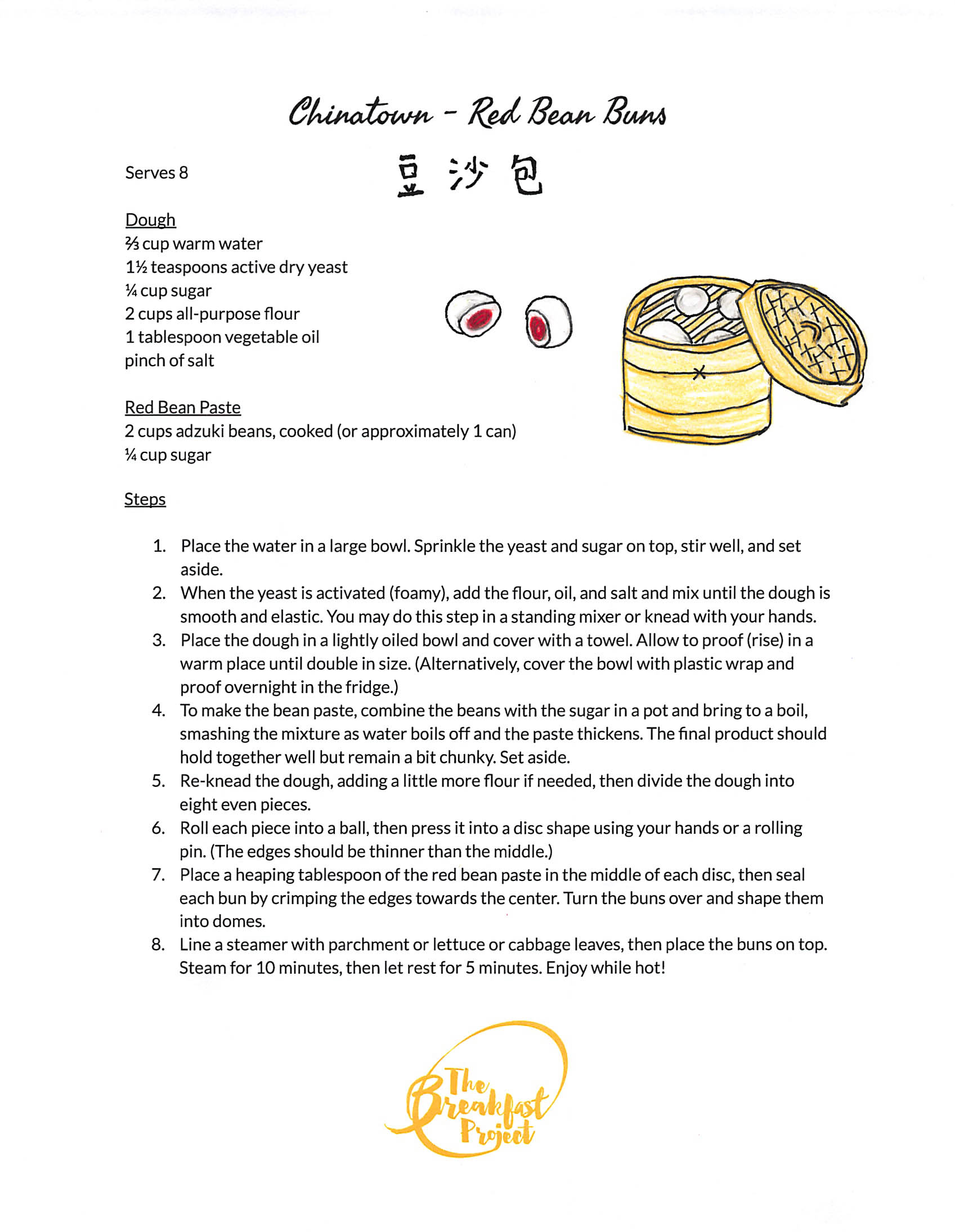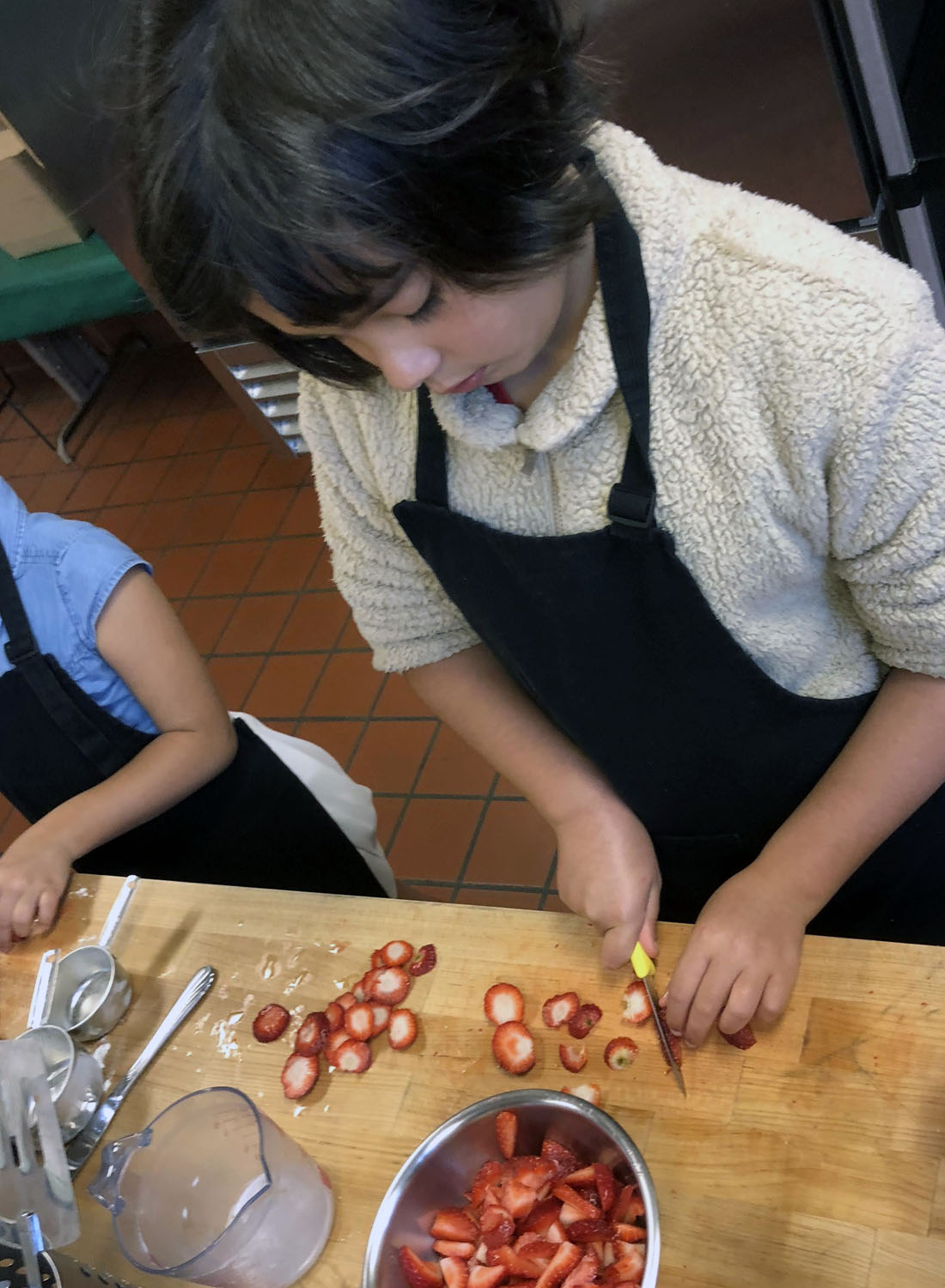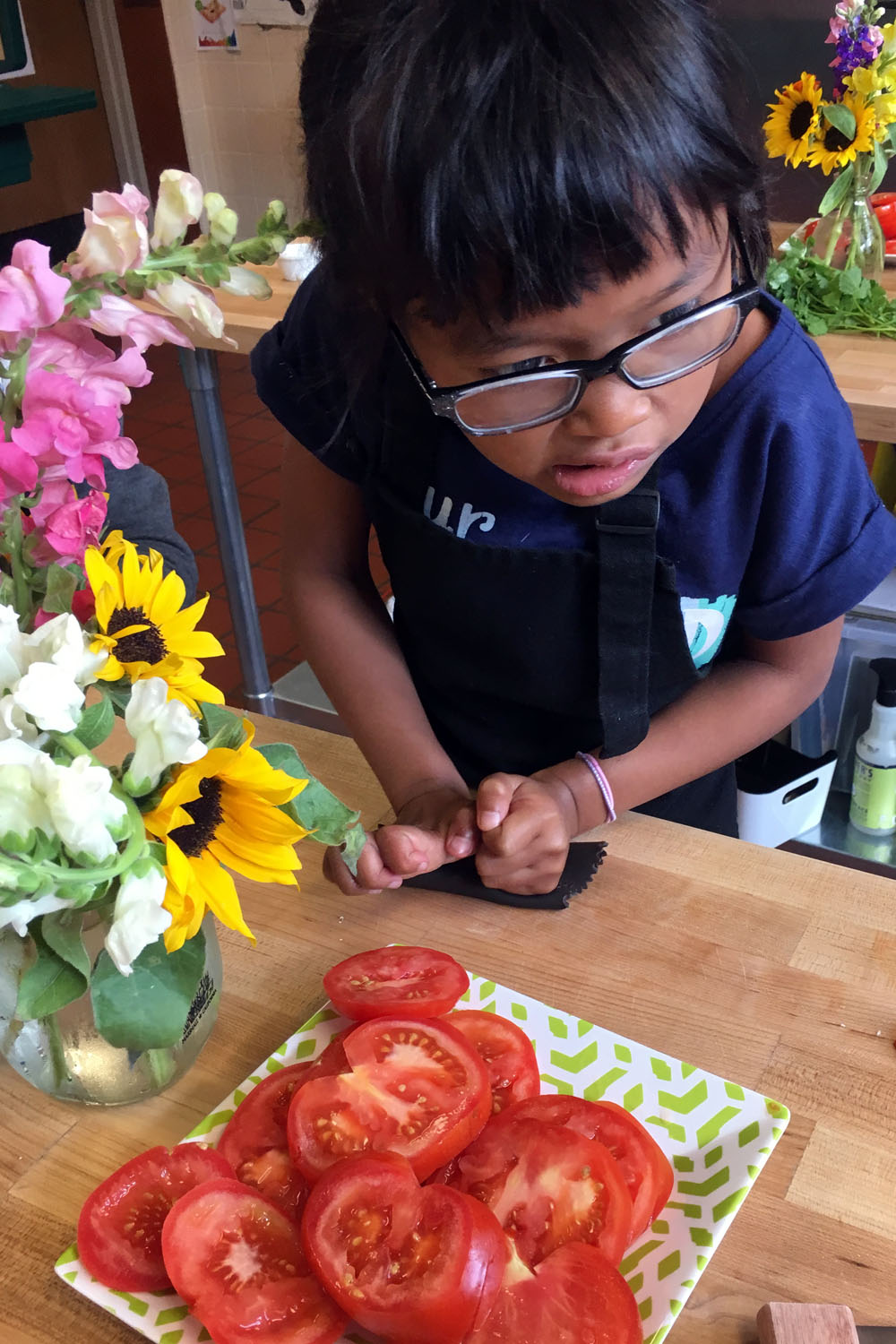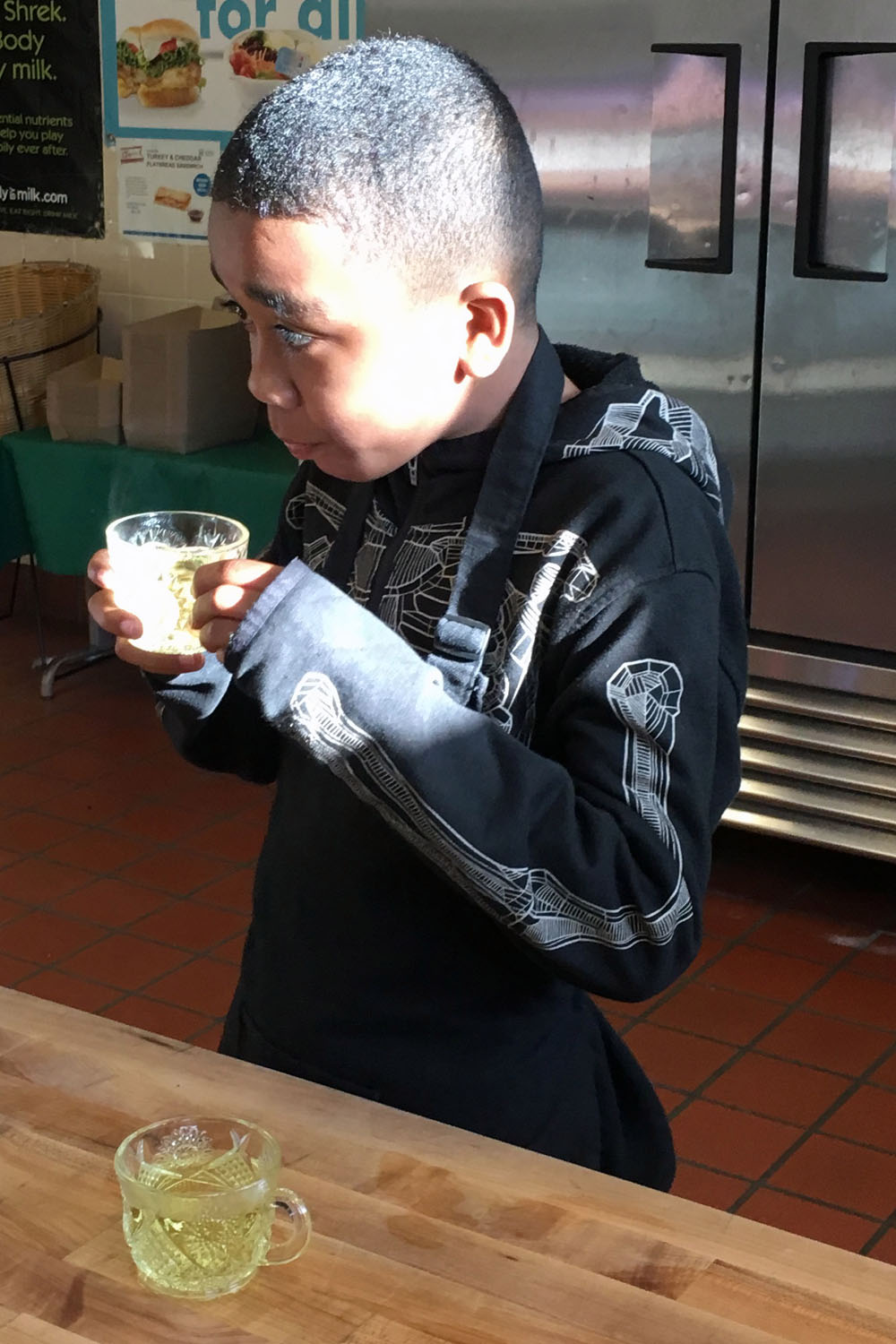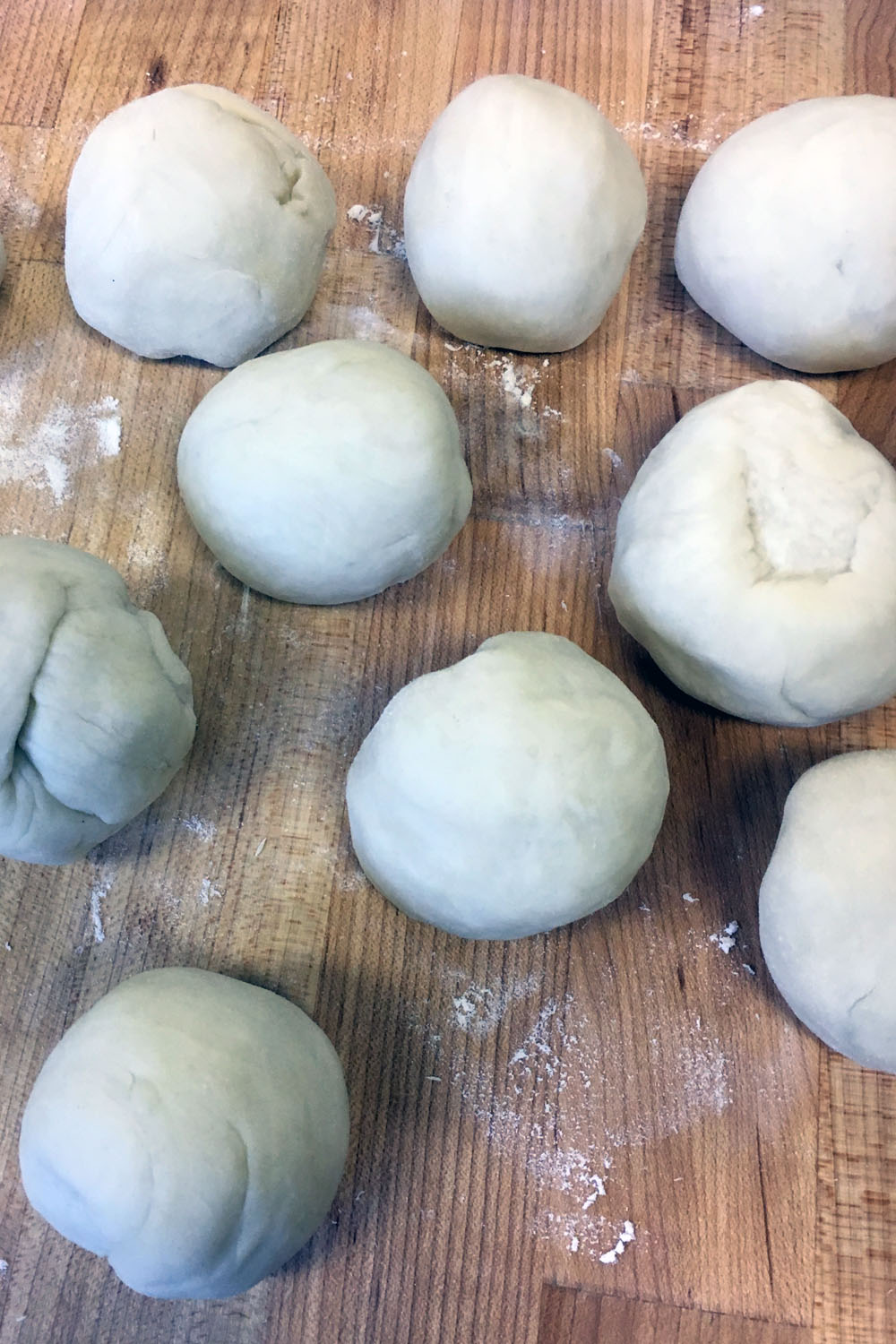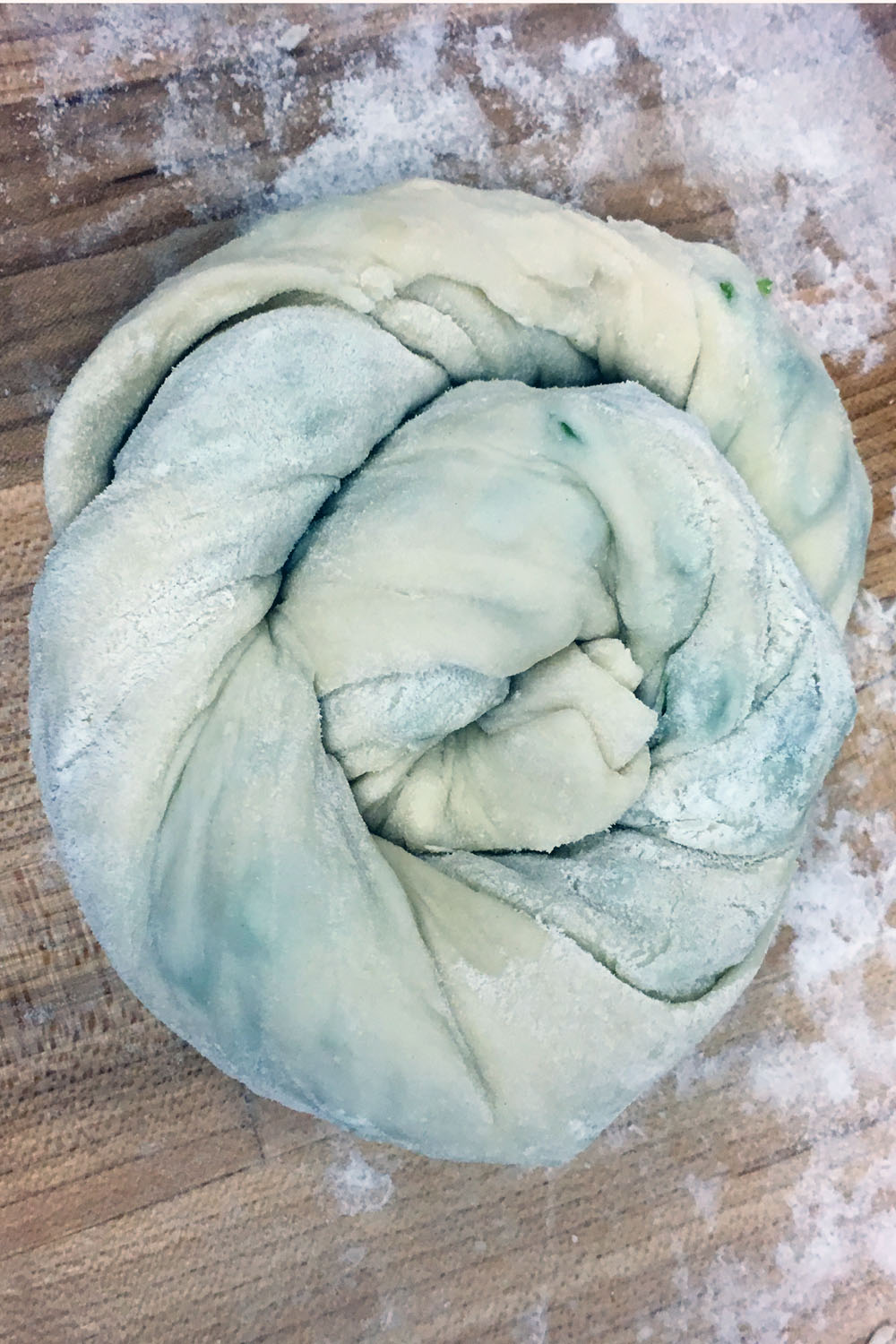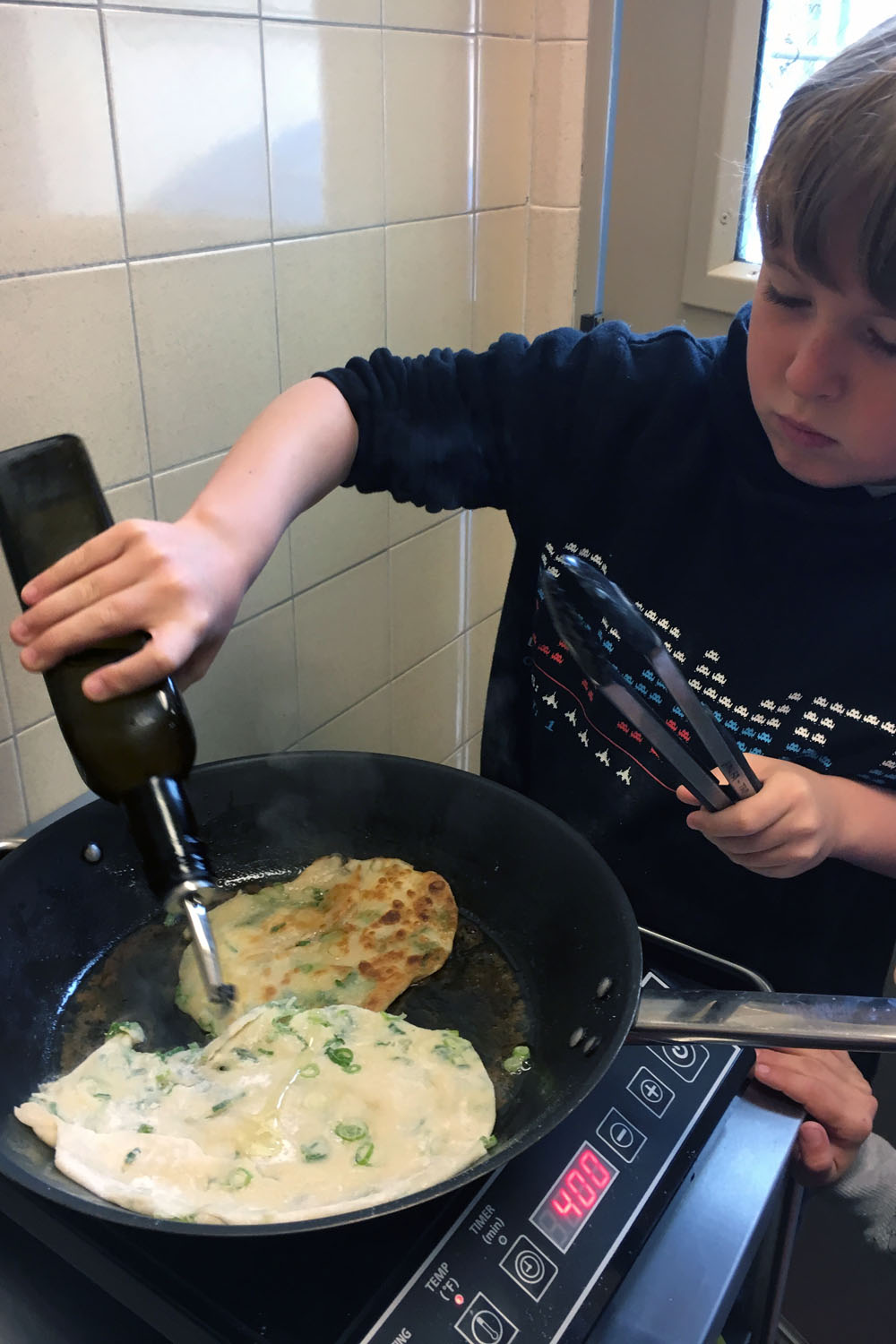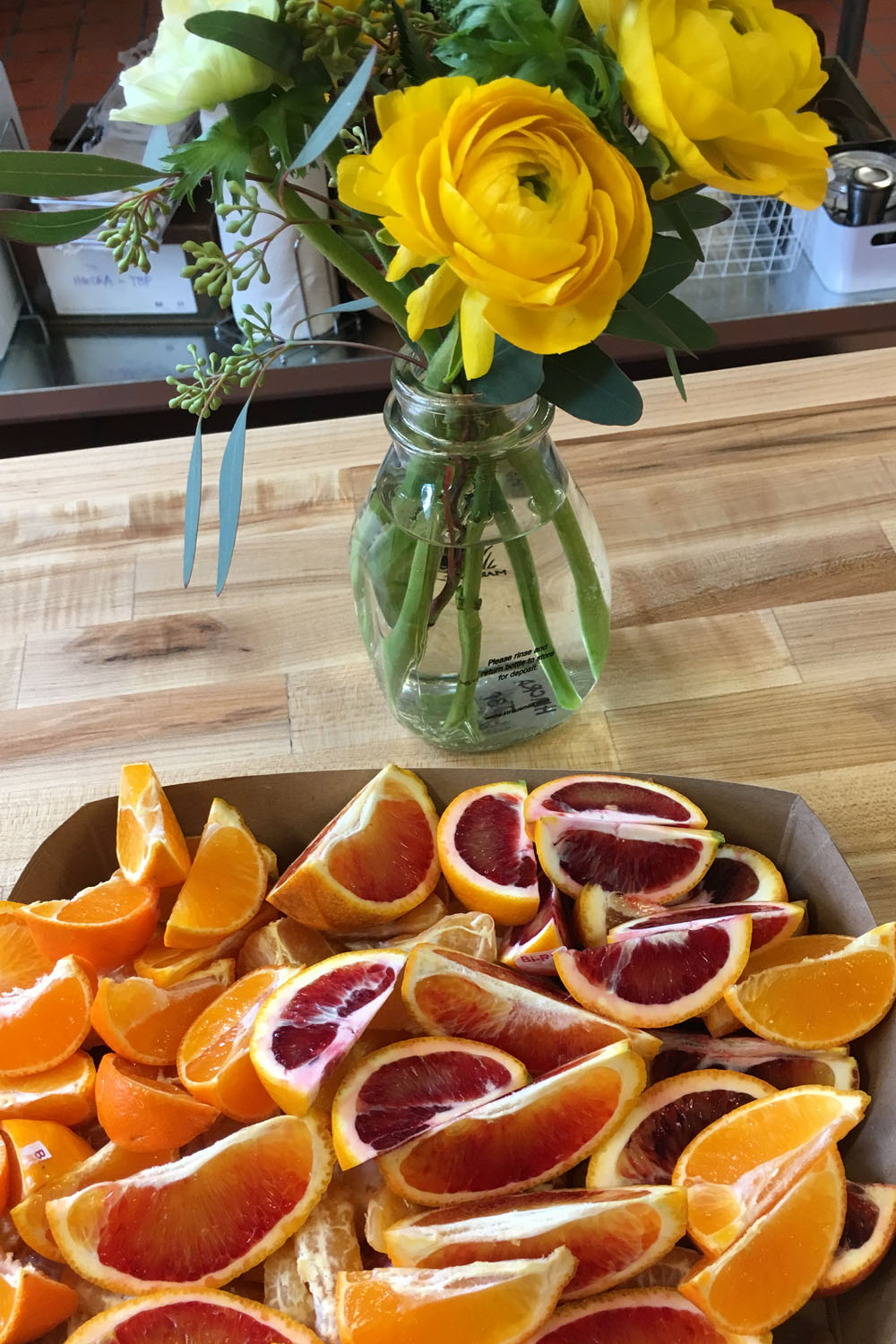This week we made strawberry acorn pancakes, featuring flour ground by hand from local Bay Area acorns. Students watched a video before coming into the kitchen classroom about the traditional Ohlone preparation of acorn mush. The ground acorn meal is cooked in a handwoven basket with soapstone that retains heat so well it boils the mush without any direct heat under the basket.
None of us on The Breakfast Project staff has firsthand experience working with acorns or deep understanding of the native San Franciscan diet and food preparation. Rather, we worked together as a class to honor an ingredient few of us encounter in modern life and learned to prepare a simple, beloved breakfast from scratch using local ingredients. The result was a fun, nutritious mid-day snack (and we didn’t even miss the maple syrup).
For those of you who would like to make the recipe at home, you can easily substitute more buckwheat, all-purpose, or really any other kind of flour for the acorn!





























